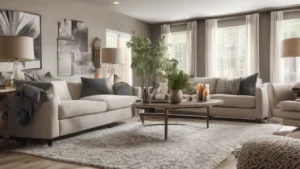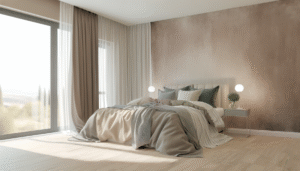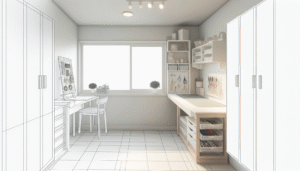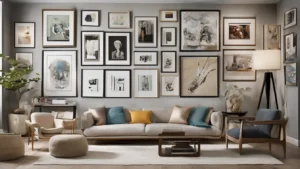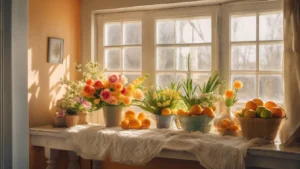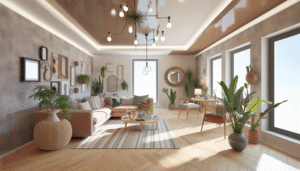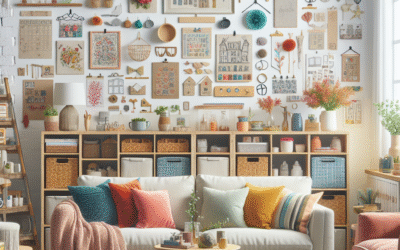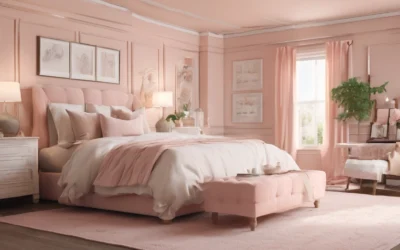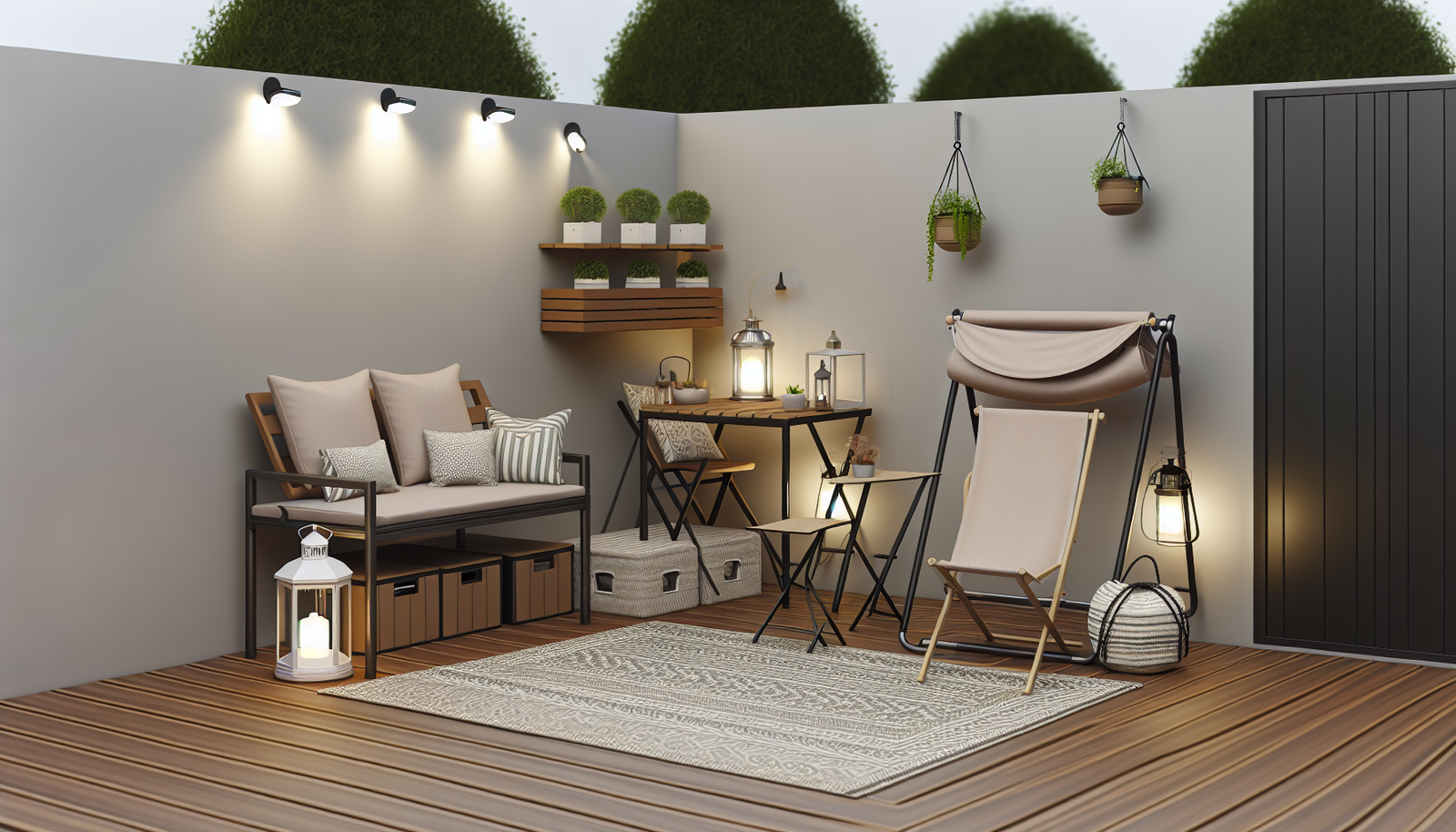
Do you look out at your small balcony, compact patio, or miniature backyard and sigh, wishing for more space? Feeling like your outdoor dreams are bigger than your footprint? You’re not alone. Many urban dwellers and homeowners with limited square footage grapple with the challenge of transforming tiny outdoor spaces into functional, inviting extensions of their homes. But here’s the exciting truth: a compact outdoor area isn’t a limitation; it’s a canvas begging for clever design. This comprehensive guide will equip you with the best small space solutions for compact outdoor areas, helping you reclaim every inch and create your dream tiny oasis.
We’re talking about more than just a few potted plants. We’re diving deep into multi-functional furniture, vertical gardening strategies, smart lighting, and space-maximizing layouts that will make your small outdoor area feel expansive and stylish. By the end of this article, you’ll know exactly how to design a compact outdoor sanctuary that reflects your personality and meets all your relaxation, entertainment, and horticultural needs, regardless of size. Let’s unlock the potential of your pint-sized paradise!
Why Compact Outdoor Areas Deserve Clever Design
The allure of a sprawling backyard often eclipses the practical beauty of a compact outdoor space. Yet, these smaller canvases offer a unique opportunity for concentrated design impact and intimate ambiance. Why invest thoughtful design into your tight balcony or small patio? Think about it this way: every square foot carries more weight, demanding clever solutions that serve multiple purposes. When you have a limited area, every choice becomes critical, leading to highly curated and efficient designs.
The Hidden Potential of Small Outdoor Footprints
A small patio isn’t just a place to store a barbecue; it can be an al fresco dining room, a cozy reading nook, or even a mini-garden retreat. The trick lies in viewing constraints as creative prompts. Compact spaces encourage innovation in furniture selection, plant display, and even lighting. We often see homeowners struggling with the “where do I put everything?” dilemma. The answer isn’t to cram it all in, but to select items that work harder and smarter, embracing the philosophy of “less is more” but with maximum functionality.
- Intimacy & Coziness: Small spaces naturally foster a sense of closeness and comfort, perfect for intimate gatherings or quiet contemplation.
- Low Maintenance: Less area means less to clean, less to plant, and less to maintain, saving you time and effort.
- Budget-Friendly: Outfitting a small space generally requires fewer materials and smaller pieces of furniture, making it more affordable to create a high-impact design.
- Design Focus: With limited space, every design decision is magnified, encouraging you to be more intentional and creative with your choices.
Image Suggestion: Infographic illustrating “Before & After” of a small, cluttered balcony transformed into a serene, functional space. Alt-text: Infographic showing small balcony transformation with before and after views.
Mastering the Layout: Strategic Zone Creation
Even the smallest outdoor area can accommodate multiple “zones” if you plan strategically. Instead of thinking of your compact patio as one undifferentiated blob, carve out specific areas for different activities. This compartmentalization creates perceived depth and makes the space feel larger and more purposeful. This is a crucial element of successful small space solutions for compact outdoor areas.
Defining Functional Zones in Restricted Areas
Begin by sketching your space. What are your primary goals for this area? Do you want to dine outdoors, relax with a book, or grow herbs? Prioritize 2-3 main functions. For example, a narrow balcony might have a “coffee and contemplation” zone and a “vertical garden” zone. A small backyard could feature a “dining nook” and a “lounge area,” separated by clever screening or a change in flooring. Remember, boundaries don’t always need physical walls; they can be implied by furniture arrangement, rugs, or distinct planting schemes. For more ideas on how to maximize your overall living space, consider exploring small apartment living tips.
- Dining Zone: Even if it’s just a bistro set for two, a designated eating area is essential.
- Relaxation Zone: A comfy chair, a small sofa, or even floor cushions can define a space for unwinding.
- Greenery Zone: Integrate plants strategically to add life without overwhelming the area.
- Utility Zone: Think about where storage or a small potting bench might fit discreetly.
Smart Traffic Flow: Don’t Block the Path
A common mistake in small outdoor designs is cluttering pathways. Always ensure there’s a clear, unobstructed route through your space. This not only enhances safety but also makes the area feel more open and navigable. Furniture should be scaled appropriately, and if possible, choose pieces that can be easily moved or folded away when not in use. Imagine yourself walking through the space; where do you naturally move? Where would you stumble? Good planning preempts these issues.
Image Suggestion: Floor plan illustrating a small patio with defined zones (dining, lounge, vertical garden) and clear pathways. Alt-text: Small patio floor plan with clear zones for dining, lounge, and vertical garden.
Furniture that Works Overtime: Multi-functional Marvels
When every inch counts, your furniture selections must be highly efficient. This is where multi-functional pieces shine as cornerstone small space solutions for compact outdoor areas. Forget bulky, single-purpose items; embrace designs that offer versatility and clever storage.
Collapsible, Stackable, and Foldable Furniture
The ability to transform your space on demand is invaluable. Bistro tables and chairs that fold flat, stackable stools, or modular sofa sections can adapt to different needs throughout the day. Need more floor space for yoga? Fold up the chairs. Hosting a small brunch? Unfold the table. This chameleon-like adaptability is key to making small outdoor areas truly dynamic.
- Folding Bistro Sets: Perfect for impromptu dining and easily stored.
- Stackable Chairs: Great for accommodating extra guests without permanently taking up space.
- Modular Sectionals: Reconfigure to suit different social settings or personal lounging.
- Nesting Tables: Provide varying surface areas when needed, then tuck away neatly.
Storage Solutions Disguised as Seating or Decor
Why have a bench that’s just a bench when it can also hide gardening tools, cushions, or toys? Ottomans with hidden compartments, benches with lift-top storage, or even planters with integrated shelving are excellent investments. These pieces pull double duty, keeping your space tidy and clutter-free while serving practical functions. It’s about optimizing every single element.
Image Suggestion: Collage of multi-functional outdoor furniture: a storage bench, a folding bistro set, and an ottoman with hidden storage. Alt-text: Collage of multi-functional outdoor furniture for small spaces.
Go Vertical! Elevating Your Greenery Game
One of the most impactful small space solutions for compact outdoor areas is to utilize vertical real estate. When you can’t build out, build up! Vertical gardening transforms bare walls and fences into lush displays, freeing up precious floor space for other uses.
Vertical Gardens: Walls that Wow
There’s an incredible variety of vertical gardening systems available, from simple wall-mounted planters to elaborate hydroponic systems. Choose what fits your aesthetic and skill level. Consider:
- Wall-Mounted Planters: Individual pots or tiered systems that attach directly to a wall or railing.
- Pallet Gardens: Repurposed wooden pallets can be turned into charming, rustic vertical planters for herbs or flowers.
- Pocket Planters: Fabric or felt pockets attached to a vertical frame, ideal for succulents or small herbs.
- Trellises and Arbors: Encourage climbing plants like ivy, clematis, or edible beans to grow upwards, creating a living wall effect.
Vertical gardens don’t just save space; they add visual interest, improve air quality, and can even offer a degree of privacy, making your small outdoor space feel like a secluded haven. For an even deeper dive into this topic, check out this guide on the benefits of vertical gardening.
Hanging Baskets and Shelving Units
Don’t forget the power of hanging elements. Suspend baskets from pergolas, awnings, or even sturdy hooks attached to upper-level balconies. This adds another layer of greenery without touching the ground. Similarly, narrow shelving units, perhaps mounted over a railing or against a wall, can hold multiple potted plants, decorative items, or even small gardening tools. Think about how a bookshelf functions indoors, and apply that same principle outdoors.
Image Suggestion: Split image: A wall with tiered vertical planters, and a separate image of decorative hanging baskets with vibrant flowers. Alt-text: Examples of vertical gardening with wall planters and hanging baskets.
Illumination and Ambiance: Setting the Scene
Lighting is often an overlooked aspect of designing small outdoor areas, but it can dramatically alter perception and functionality. Strategic lighting can make a compact space feel larger, more inviting, and usable long after sunset. It’s a fundamental part of effective small space solutions for compact outdoor areas.
Clever Lighting for Small Footprints
Avoid harsh, overhead lighting that can create shadows and make a small space feel oppressive. Instead, layer your lighting with multiple sources at different heights. This creates depth and allows you to control the mood. Imagine fairy lights twinkling overhead, a soft glow from a floor lamp in a corner, and a spotlight highlighting a beautiful plant. This combination enhances ambiance and avoids making the space feel like a brightly lit stage.
- Fairy or String Lights: Affordable, charming, and perfect for creating a canopy effect or outlining a space.
- Solar-Powered Lights: Eco-friendly and require no wiring, ideal for pathways or accenting planters.
- Wall Sconces: Provide ambient light without taking up floor space.
- Portable Lanterns/Lamps: Offer flexibility to move light where it’s needed for reading or eating.
Mirrors: The Ultimate Space Illusions
This is a classic interior design trick that works wonders outdoors too. Strategically placed outdoor-safe mirrors can reflect light and create the illusion of more space, almost like an additional window or doorway. Position a large mirror opposite a beautiful plant or a charming decor item to double its impact. Just ensure it’s securely mounted and designed for outdoor conditions to withstand the elements.
Image Suggestion: A small balcony at dusk, illuminated by string lights, with a large outdoor mirror reflecting a potted plant. Alt-text: Small balcony illuminated at dusk with string lights and a large outdoor mirror.
Flooring and Boundaries: Grounding Your Design
The choices you make for your flooring and how you define your space’s boundaries have a huge impact on how large and cohesive your compact outdoor area feels. These are fundamental elements for small space solutions for compact outdoor areas.
Defining the Space with Flooring
Uniformity in flooring can make a small space feel continuous and therefore larger. If your balcony connects to your living room, consider using similar tones or materials if possible, or at least a complementary color scheme. For patios, continuous paving or decking can achieve this effect. Alternatively, a single, large outdoor rug can define a “room” within your outdoor space, adding warmth and visual interest. Avoid breaking up the floor with too many different materials, as this can visually chop up the space and make it feel smaller.
- Decking Tiles: Easy to install over existing concrete and provide a uniform, warm surface.
- Outdoor Rugs: Instantly define a zone and add color/texture.
- Pea Gravel: For small ground-level areas, offers a permeable and charming surface.
Privacy Screens and Green Walls
Privacy is often a concern in compact outdoor areas, especially in urban settings. Instead of solid, imposing walls, opt for solutions that provide screening while maintaining an open feel:
- Lattice Panels: Allow light and air to pass through, creating a semi-private feel, and can be used for climbing plants.
- Slatted Screens: Offer more privacy than lattice but still prevent a completely closed-off sensation.
- Bamboo Fencing: Natural, attractive, and provides excellent screening.
- Tall Planters with Lush Shrubs: A living fence creates a beautiful and private boundary.
Image Suggestion: A small urban balcony with a slat-wood privacy screen covered partly by climbing plants. Alt-text: Small urban balcony with slatted privacy screen and climbing plants.
Color, Texture, and Scent: Engaging the Senses
Don’t underestimate the power of sensory details in making a small space feel alive and inviting. Thoughtful use of color, varied textures, and pleasant scents can elevate your compact outdoor area from merely functional to truly enchanting. These details are vital small space solutions for compact outdoor areas that craft a memorable experience.
Strategic Color Palettes for Openness
Light colors tend to make a space feel larger and more open, reflecting light rather than absorbing it. Consider soft whites, light grays, pale blues, or even creamy yellows for walls, large furniture pieces, or flooring. You can then introduce pops of vibrant color through cushions, smaller decorative elements, or, most effectively, through plants and flowers. A cohesive color scheme helps create a unified look, which contributes to a feeling of spaciousness.
- Base Colors: Light neutrals (white, cream, light grey) for main surfaces.
- Accent Colors: Bright, bold colors (turquoise, coral, sunshine yellow) in moderation for visual interest.
- Green Tones: The natural greenery of plants brings life and freshness without overwhelming the palette.
Texture Play: Adding Depth and Interest
Varying textures prevent small spaces from feeling monotonous. Combine smooth metals with rough wood, soft fabrics with hard stone. Think about the texture of your cushions, the material of your planters, the weave of your rug, and the foliage of your plants. This interplay of textures adds visual depth and makes the space more tactile and inviting. For instance, a sleek metal table paired with woven chairs and a plush outdoor rug creates a rich sensory experience.
Fragrant Plants and Aromatherapy
Engage the sense of smell with a selection of fragrant plants. Herbs like lavender, rosemary, and mint not only smell wonderful but can also be used in cooking. Climbing jasmine or honeysuckle can create an intoxicating aroma. You can also incorporate outdoor-friendly scented candles or diffusers for events, adding another layer to the sensory appeal of your tiny oasis. A pleasant aroma can truly transport you, making a small patio feel like a luxurious escape.
Image Suggestion: Close-up of a vibrant potted plant in a textured planter, with a soft throw blanket on a chair in the background, showing rich textures. Alt-text: Outdoor setting featuring vibrant plant in textured pot and soft textile.
Enhancing the Micro-Climate: Comfort in Any Weather
Even a compact outdoor area can be made comfortable year-round with the right micro-climate solutions. Maximizing usability means thinking about sun, shade, and warmth. These climate-control innovations are critical small space solutions for compact outdoor areas.
Shade Solutions for Scorching Days
Protection from the sun is paramount for enjoying your outdoor space during warmer months. Given limited area, traditional large umbrellas or pergolas might not be feasible, so consider:
- Cantilever Umbrellas: These umbrellas have a base to the side, allowing the canopy to hover over your seating area without a central pole.
- Sail Shades: Inexpensive and versatile, sail shades can be strung between existing structures or poles, offering flexible shade.
- Retractable Awnings: A more permanent solution, but excellent for adjustable shade that can be pulled back when not needed.
- Climbing Plants on a Trellis: A beautiful and natural way to create dappled shade as they grow.
Warmth for Chilly Evenings
Extend the usability of your outdoor space into cooler evenings with smart heating options:
- Tabletop Fire Pits: Small, portable, and provide both warmth and ambiance.
- Electric Patio Heaters: Often slender and can be wall-mounted or freestanding, suitable for compact spaces where gas isn’t an option.
- Outdoor Blankets/Throws: Simple, cozy, and portable, always a good idea to have on hand.
- Solar-Powered Lighting: For areas without easy access to power outlets, solar stakes or lanterns are a fantastic choice, charging during the day and lighting up your evenings. For more advice on creating cozy outdoor settings, consult a landscaping expert or a detailed guide on outdoor heating solutions.
Image Suggestion: A small balcony with a sleek cantilever umbrella providing shade, and a small tabletop fire pit glowing on a cool evening. Alt-text: Small balcony with cantilever umbrella and tabletop fire pit for comfort.
Sustainability and Eco-Friendly Touches: Green Your Small Space
Embracing sustainability in your compact outdoor area isn’t just good for the planet; it can also lead to unique, cost-effective, and low-maintenance solutions. Integrating eco-friendly practices is another layer of smart small space solutions for compact outdoor areas.
Water-Wise Gardening Practices
In small spaces, containers dry out quickly. Consider:
- Drought-Tolerant Plants: Succulents, lavender, rosemary, and some ornamental grasses require less water.
- Self-Watering Planters: These reservoirs slowly release water, reducing the need for frequent watering.
- Mulch: Apply a layer of mulch to the top of your container soil to retain moisture.
- Rain Barrels: If space permits, a small rain barrel can collect water for your plants, especially useful for larger compact yards.
Repurposing and Upcycling for Decor
Give new life to old items! A vintage wooden ladder can become a vertical planter or shelving unit. Old crates can be stacked for modular storage or seating. Repurposed tin cans can make charming herb pots. This approach not only saves money but adds a unique, personal character to your space. It’s a fantastic way to introduce unique, budget-friendly character to your small outdoor areas.
Attracting Pollinators
Even a small balcony can become a haven for local wildlife. Plant bee-friendly flowers like marigolds, zinnias, or cosmos. A small bird feeder or a shallow water dish can attract birds. This adds life and movement to your space, connecting you more deeply with nature, even in a bustling urban environment. Plus, it contributes positively to your local ecosystem.
Image Suggestion: A collection of upcycled planters (painted tin cans, repurposed ladder) with drought-tolerant plants and a bee hovering over a flower. Alt-text: Eco-friendly small space gardening with upcycled planters and pollinator-friendly plants.
Maintenance & Ongoing Care: Keeping Your Oasis Pristine
A well-designed small outdoor area is not just about the initial setup; it’s about maintaining its beauty and functionality over time. Because every element is so visible in a compact space, regular upkeep is even more crucial. Incorporating low-maintenance strategies from the start is truly one of the best small space solutions for compact outdoor areas.
Choosing Low-Maintenance Materials and Plants
When selecting furniture and decor, lean towards materials that are durable and easy to clean. Synthetic wicker, teak, aluminum, and weather-resistant fabrics are excellent choices. For plants, opt for varieties that are well-suited to your local climate and require minimal fuss. Think resilient succulents, hardy herbs, or native species that typically thrive with less intervention. This cuts down on the chores and lets you enjoy your space more.
- Furniture Materials: Aluminum, synthetic rattan, marine-grade polymer (HDPE).
- Plant Choices: Succulents, ornamental grasses, hostas (for shade), lavender, rosemary.
Smart Storage for Tools and Accessories
Clutter can quickly overwhelm a small space. Invest in discreet storage solutions like deck boxes, benches with hidden compartments, or wall-mounted shelves to keep gardening tools, cushions, and other outdoor accessories neatly tucked away when not in use. A tidy space feels larger and more inviting, so this is a crucial step in maintaining visual spaciousness and order.
Image Suggestion: A modern, sleek deck box that doubles as seating, with cushions neatly stored inside. Alt-text: Modern deck box for outdoor storage and seating.
Seasonal Updates and Refreshers
Even with low-maintenance choices, a small refresh each season can bring new life to your space. Swap out cushion covers, introduce new seasonal plants, or change your lighting scheme. These small adjustments can keep your compact outdoor area feeling fresh and exciting without requiring a complete overhaul. For example, warm-toned cushions and pumpkins in autumn, cool tones and vibrant annuals in spring.
Troubleshooting Common Small Space Challenges
Even with the best intentions, designing compact outdoor areas can present unique hurdles. Let’s tackle some of the most common issues and provide practical small space solutions for compact outdoor areas.
Challenge 1: Lack of Privacy
Solution:
- Living Screens: Use tall, slender planters with bamboo, privacy hedges, or climbing vines on trellises. These provide natural screening.
- Strategic Placement: Arrange seating so your back is to the least private side.
- Temporary Screens: Consider retractable screens, sail shades, or outdoor curtains that can be deployed when needed.
- Soundscaping: A small water feature can help mask unwanted neighborhood sounds, contributing to a sense of seclusion.
Challenge 2: Overcrowding & Clutter
Solution:
- One-In, One-Out Rule: For every new item you bring in, remove an old one.
- Hidden Storage: As discussed, multi-functional furniture is your best friend.
- Vertical Storage: Shelving, hooks, and wall organizers for gardening tools or small decorative items.
- Curated Collections: Instead of many small items, choose a few larger, impactful pieces.
Challenge 3: Poor Drainage
Solution:
- Elevated Planters: Use planters with feet or placed on risers to allow water to flow freely underneath.
- Raised Decking: If building a new floor, ensure it’s elevated and allows for proper runoff.
- Permeable Surfaces: Consider pea gravel or pavers with gaps for water absorption in ground-level areas.
- Container Choice: Ensure all pots have drainage holes, and use a good quality potting mix.
Challenge 4: Limited Sunlight/Too Much Sun
Solution (Limited Sunlight):
- Shade-Loving Plants: Hostas, ferns, impatiens, and certain mosses thrive in low light.
- Light Colors: Use light-colored walls and flooring to reflect any available light.
- Mirrors: Position mirrors to reflect light into darker corners.
Solution (Too Much Sun):
- Shade Structures: Umbrellas, awnings, sail shades, or pergolas.
- Heat-Tolerant Plants: Succulents, bougainvillea, some herbs, and cacti.
- Water Features: A small fountain can introduce evaporative cooling.
- Cooling Misters: Small misting systems can reduce ambient temperature significantly.
Image Suggestion: A series of small panels, each depicting a common challenge (e.g., crowded balcony) and its solution (e.g., vertical garden). Alt-text: Troubleshooting common small outdoor space challenges with visual solutions.
FAQ: Your Compact Outdoor Oasis Questions Answered
What is the best type of furniture for a small outdoor space?
The best furniture for a compact outdoor area is multi-functional, foldable, stackable, or modular. Think wall-mounted tables, benches with integrated storage, and chairs that can be easily tucked away. Lightweight materials like aluminum or synthetic wicker are also excellent choices for flexibility and ease of movement. Prioritize pieces that serve at least two purposes to maximize efficiency.
How can I make my small balcony feel bigger?
To make a small balcony feel larger, utilize vertical space with planters, choose light-colored paint or decor, incorporate mirrors to reflect light and create depth, and use strategic lighting. Opt for streamlined, scaled-down furniture and minimize clutter. Defining distinct zones for different activities also helps create the illusion of more space.
What kind of plants are best for small outdoor spaces?
For small outdoor areas, choose plants that are compact, upright growers, or suitable for vertical gardening. Herbs like rosemary and mint, succulents, compact shrubs, small ornamental grasses, and climbing plants are ideal. Consider their sun and water needs relative to your space, and opt for drought-tolerant or low-maintenance varieties if you prefer less upkeep.
How do I add privacy to a small patio that’s overlooked?
Increase privacy on a small patio using living screens (tall planters with dense foliage, climbing vines on trellises), slatted or bamboo screens, outdoor curtains, or even a strategically placed large umbrella. Soundscaping with a small water feature can also help mask unwanted noises and create a more secluded atmosphere. Experiment with layering different solutions for optimal effect.
Are outdoor rugs a good idea for compact areas?
Yes, outdoor rugs are an excellent idea for compact areas! They can instantly define a “living zone,” add color, texture, and warmth, and make a small space feel more cohesive and inviting. Choose rugs made from durable, weather-resistant materials like polypropylene, and ensure they are appropriately sized for your zone to avoid overwhelming the space. A single large rug often works better than multiple small ones in making a space feel unified.
Can I install a water feature in a very small outdoor space?
Absolutely! Many compact water features are designed specifically for small outdoor areas. Look for tabletop fountains, wall-mounted fountains, or self-contained mini-pond kits. These add soothing sounds, visual interest, and a touch of tranquility without taking up much square footage. They are fantastic for enhancing the ambiance and micro-climate of your tiny oasis.
Conclusion: Your Dream Outdoor Oasis Awaits
Transforming compact outdoor areas from forgotten corners into cherished extensions of your home is not only possible but incredibly rewarding. By embracing clever design strategies—from multi-functional furniture and ingenious vertical gardens to strategic lighting and purposeful zone creation—you can unlock the full potential of your balcony, patio, or miniature yard. We’ve explored a wealth of small space solutions for compact outdoor areas, each designed to maximize both aesthetics and practical utility.
Remember, your tiny outdoor space is a canvas; don’t let its size limit your imagination. Focus on thoughtful choices, embrace fluidity with adaptable pieces, and infuse your personality into every detail. The key is to view constraints not as roadblocks, but as creative prompts guiding you towards innovative and deeply satisfying designs. Now armed with these insights, step outside, measure, sketch, and start creating the outdoor haven you’ve always dreamed of. Your perfect compact outdoor area is truly within reach!
Ready to start designing your tiny oasis? Begin by identifying your priorities for the space, then pick one or two of these smart solutions to implement this weekend. Share your progress and connect with other small-space enthusiasts in our community forum!
Content Disclaimer
The information provided in this article about small space solutions for compact outdoor areas is intended for general informational and educational purposes only, and should not be considered as professional design or construction advice. While we strive to offer accurate and helpful suggestions, individual results may vary based on specific conditions, local regulations, and personal application. Always consult with qualified professionals (e.g., landscape architects, contractors) for specific design plans, structural considerations, and project implementation, especially for installations requiring safety assessments, permits, or complex construction. We do not assume any responsibility for actions taken based on the information provided herein.
Categories
- Accent Walls & Ceilings (61)
- Art Curation & Gallery (62)
- Bedding Style Trends (68)
- Bedroom Makeover (81)
- Bohemian & Eclectic Styles (58)
- DIY & Budget-Friendly Decor (64)
- Eco-Friendly Design (62)
- Furniture Care (71)
- Home Decor & Design Ideas (162)
- Home Wellness Spaces (59)
- Integrated Outdoor Living (67)
- Japandi Style (61)
- Kids and Nursery Decor (59)
- Living Room Decor (79)
- Mix & Match Techniques (73)
- Modern & Contemporary Design (66)
- Rug Sizing & Placement (73)
- Scandinavian Design Inspiration (20)
- Seasonal Home Decor (79)
- Small Space Solutions (73)
- Wall Art & Painting Tips (77)
Recent Comments
Archives
Product Gallery
-
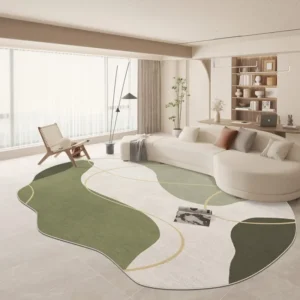 Large Area Green Rugs for Bedroom Nordic Living Room Decoration Shaped Carpet Irregular Plush Lounge Rug Home Thick Washable Mat
Rated 5.00 out of 5$55.01 – $346.86Price range: $55.01 through $346.86
Large Area Green Rugs for Bedroom Nordic Living Room Decoration Shaped Carpet Irregular Plush Lounge Rug Home Thick Washable Mat
Rated 5.00 out of 5$55.01 – $346.86Price range: $55.01 through $346.86 -
 Nordic Style Rugs for Bedroom Morandi Living Room Decoration Carpet Large Area Geometry Lounge Rug Home Cloakroom Non-slip Mat
Rated 5.00 out of 5$39.51 – $598.43Price range: $39.51 through $598.43
Nordic Style Rugs for Bedroom Morandi Living Room Decoration Carpet Large Area Geometry Lounge Rug Home Cloakroom Non-slip Mat
Rated 5.00 out of 5$39.51 – $598.43Price range: $39.51 through $598.43 -
 Irregular Shapes Living Room Decoration Carpet Modern Style Rugs for Bedroom Home Thicken Plush Rug Fluffy Soft Lounge Floor Mat
Rated 4.83 out of 5$55.91 – $347.82Price range: $55.91 through $347.82
Irregular Shapes Living Room Decoration Carpet Modern Style Rugs for Bedroom Home Thicken Plush Rug Fluffy Soft Lounge Floor Mat
Rated 4.83 out of 5$55.91 – $347.82Price range: $55.91 through $347.82

